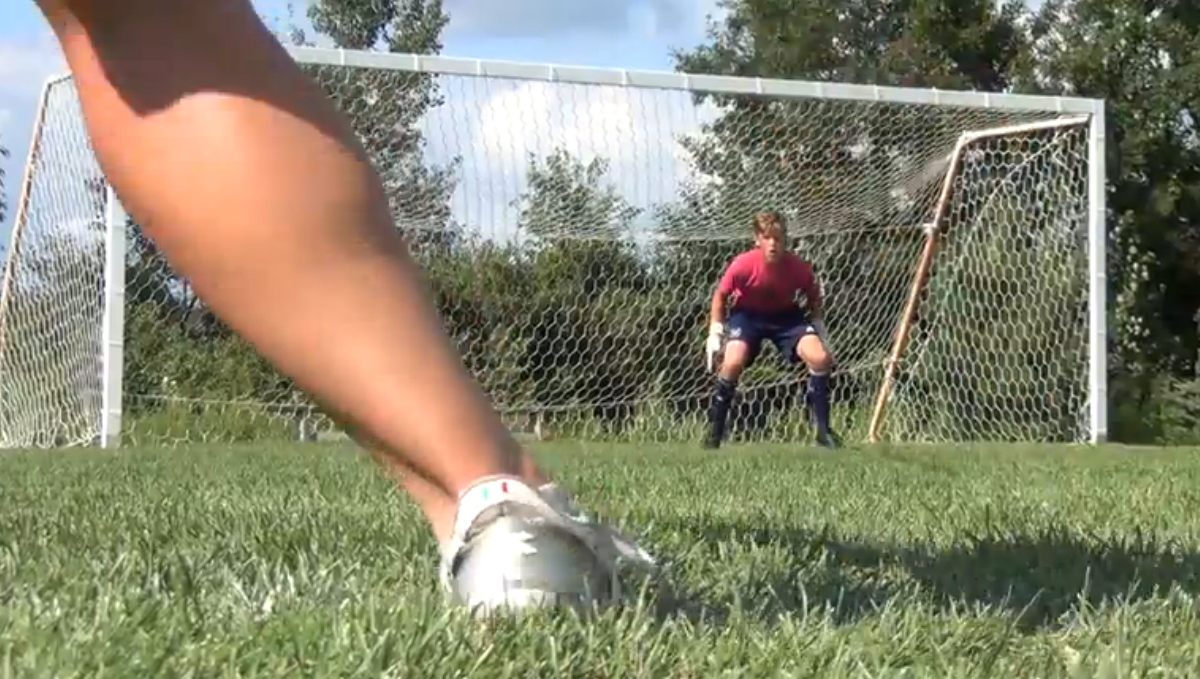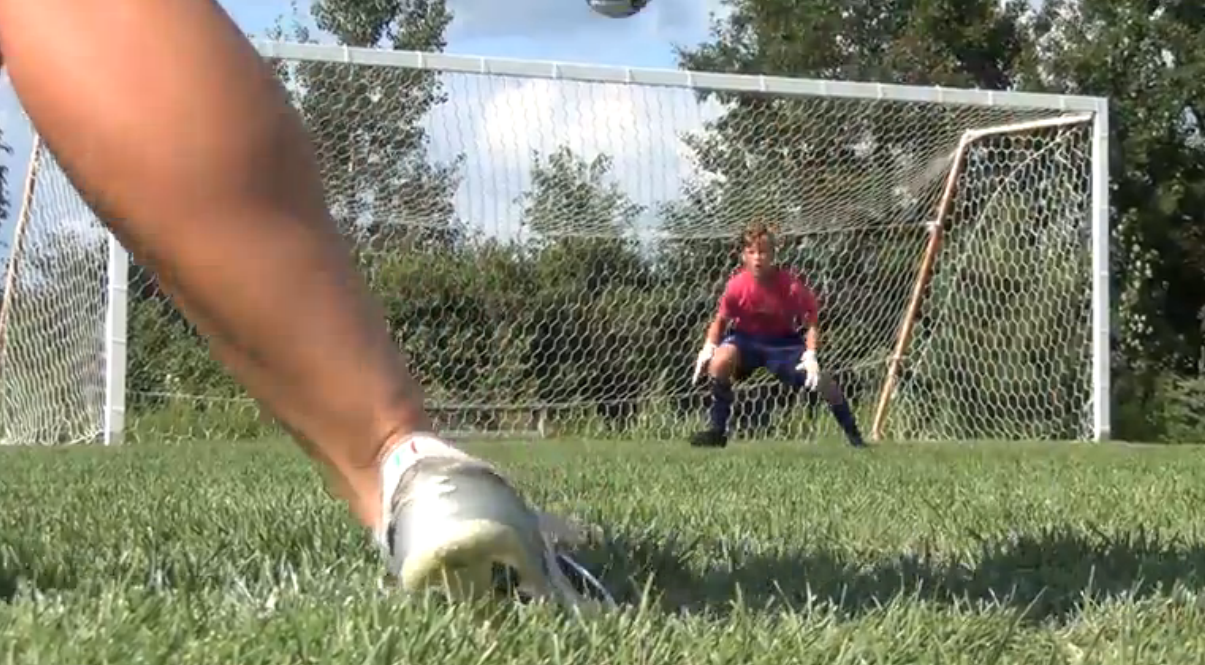Hey Toney, was watching some of your footwork and I think you would really benefit from mimicking goalkeeper Pat Wall. Pat was the starter for Notre Dame's 2013 championship run, where they beat Maryland (who was starting Zac Steffen in goal at the time). Pat has since retired to go into aerospace engineering, which you can't blame the career move.
So take a look at 2:10, 0:50, 1:17, 1:36, and 1:44. Watch his feet before the shot is taken. They are in a constant, rhythmic motion until the shot is taken, which he then springs out. There is never a pause and the rhythm is consistent until he breaks for the shot. One thing I would change about his approach is the last jumpset goes significantly wider than the previous ones. This is common for goalkeepers and it really limits lateral movement. It's not the worst thing to do but it can really get out of hand, which is what Tim Howard is struggling with now. Notice how wide his stance is.
But the bigger point is that Wall's "hot feet" (I don't know what the technical term is) keep him sharp, ready to explode, and, most importantly, in rhythm to give him the most time to react.
Watching your highlight video (here), your footwork is a little out of sorts. I was actually there watching the filming (you can here me at 0:40) so I remember seeing you then and am glad Eric put this up. Going to the third shot (around 0:10) you have a slowing series of jumpsets that eventually stop you completely, causing you to to take an additional jumpset to get back into it.
While it looks like a good save, you're actually behind the shot. Notice you take three jumpsets. Two before the shot is taken, then you pause for too long. Because you are still for so long, you have to take another jumpset to get the spring back in your legs. All the while, the ball is traveling to you and you are losing time on the shot. Here are some stills to show you footwork.







Seven pictures in all.
- Notice how tall you are here. You are at the peak of your first jumpset.
- You have now landed and are about to start your second jumpset. This is a good 6-8 drop, a clear indicator your first jumpset is too much. Textbook "hot feet" doesn't move your upper body hardly at all. You keep your legs moving but your upper body is still for the most part.
- You have now landed from your second jumpset, around a 12 inch drop. Your legs are actually more in control here (your heels aren't getting off the ground as high as the first one) but you are needlessly squeezing your body low. Within a second you have moved about a foot and a half down. It's a lot of needless movement and if you don't time it right, like we see here, you are behind the play. Also, since you are staying still for too long, you lose any spring you would have from the second jumpset.
- The shot is taken and you are starting your third jumpset to get the spring back.
- The ball is about a quarter of the way to you (from starting point to final destination) and you are at the top of your jumpset.
- The ball is half way to you and your left foot has finally landed, giving you your first chance of moving your upper body towards the ball. Your right foot is actually still in the air here.
- Your right foot has finally landed, allowing you to transfer power and move your upper body towards the ball. This frame is a little behind but you get the idea.
There are some more egregious examples in the video but this one gives us the clearest picture. 0:37 is probably the shot you are the most behind. Try to pause the video to see when your right foot finally hits the ground from the jumpset. Sure, a good shot, but you're not in any position to make a play on it. Again in 0:55, all you can do is watch the shot sail on you because you're behind it.
I know this was from months ago, and only a one minute clip of a few shots, so I don't put a ton of stock into it. However, assuming your jumpset is still the same, you are getting stuck in the mud and losing all spring a jumpset gives you. Because your two jumpsets are so big and out of sync, you must take another jumpset to get the spring back. While you are doing this, you have lost around 50% of your time to move towards the ball. When you do this pre-shot routine, you are taking a shot from eighteen yards out and essentially making it a shot form nine yards out because you must wait on a third jumpset. Now, the ball is halfway to you and this is a reaction save instead of incorporating any more lateral movement. You'll notice you rarely shuffle on any of the shots because your time is so limited.
So there are actually two cues you can pick up on when you should time your final jumpset. We have the obviously visual cue of the striker planting their foot and striking of the ball but we also have the audio cue of the ball being hit. (The latter is very important for when there is a crowd or defender in front of us and our visuals are a little obstructed.)
Apologies if that was a little harsh but just wanted to bring it to your attention. If you get into a specific rhythm with your jumpsets, you will start to really extend your limits of shot stopping. So the next time you are taking shots, really pay attention to your timing. Are you giving yourself the most amount of time to react to the shot? Or are you cutting it in half because your timing is off? There's not a whole not better than making a save that leaves a striker with his hands on his head.
All the best,
Bill

